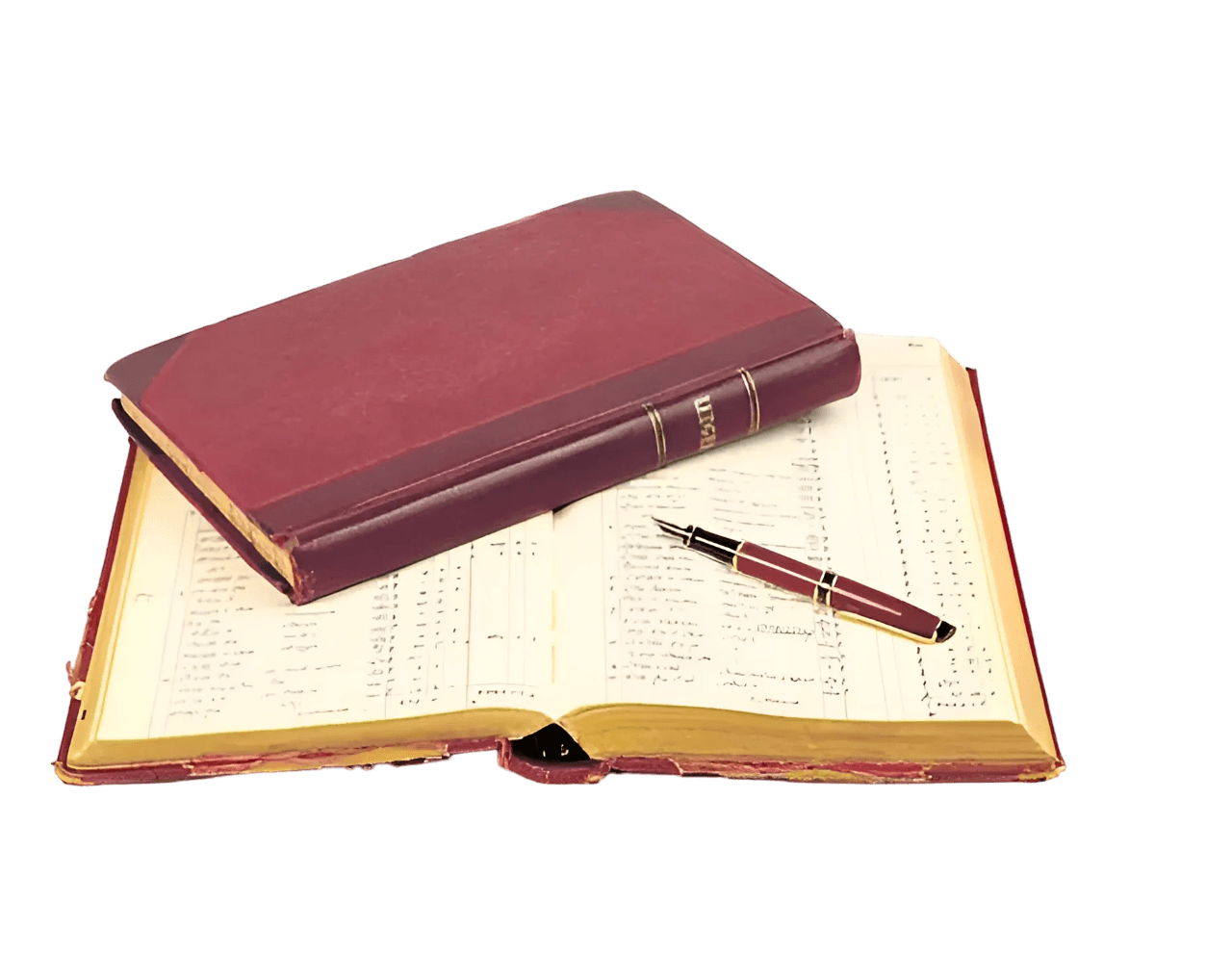When you think of accounting today, you might picture rows of numbers on spreadsheets or calculations punched into a sleek calculator. But did you know that the roots of accounting in India go back thousands of years?
Yes, long before modern tools existed, India had already developed a sophisticated system of tracking finances.
In the world of business, keeping track of income, expenses, and transactions isn’t just important—it’s essential. That’s exactly what accounting does. It’s the backbone of any business, providing clarity, ensuring transparency, and helping people make informed financial decisions.
So, let’s take a trip back in time and explore the rich and fascinating history of accounting in India. From ancient methods to the systems we rely on today, this journey will show how an age-old practice became a cornerstone of modern commerce.
The Early Days of Accounting in India (1500 BCE – 3rd Century BCE)
Let’s rewind to the Vedic Age (1500 BCE – 500 BCE), where our journey into the history of Indian accounting truly begins. Back then, the Indus Valley Civilization was thriving, with bustling trade routes connecting regions. While we don’t have direct evidence of formal accounting systems from this era, ancient texts like the Rigveda give us a glimpse into the early seeds of commerce.
Within the hymns of the Rigveda, words like "Kraya" (sale), "Vanij" (merchant), and "Sulka" (price) pop up—terms that suggest some form of record-keeping was already in play to keep track of transactions. After all, managing a growing economy without financial records would have been quite a challenge!
Fast forward to the 3rd century BCE, and we encounter one of India’s most significant texts: the Arthashastra. Written by the brilliant strategist Chanakya (also known as Kautilya) during the Mauryan Empire, this ancient treatise goes deep into the realm of statecraft and economics, with a surprising amount of focus on accounting.
In the Arthashastra, Chanakya outlines the importance of detailed record-keeping for the king’s treasury. He talks about everything from managing revenue and tracking expenses to keeping inventories of storehouses. Officials were even appointed to maintain accounts and conduct audits—a clear indication that financial transparency and accountability were already valued in those times.
While it’s not the double-entry system we know today, the Arthashastra lays the groundwork for systematic accounting practices, ensuring that the financial workings of a kingdom were well-organized.
Temples: The Unexpected Hubs of Record-Keeping (3rd Century BCE – Onwards)
When you think of ancient Indian temples, you probably picture peaceful sanctuaries dedicated to worship. But what if I told you that these temples weren’t just spiritual centers—they were also buzzing economic hubs?
That’s right! Temples in ancient India managed vast lands, received generous donations, and oversaw everything from agriculture to trade, education, and even social welfare. With so many resources flowing in and out, they needed a highly organized system of record-keeping to keep things running smoothly.
Now, just imagine the complexities involved. Temple authorities had to carefully track income from land yields, offerings from devotees, and profits from business ventures. And it didn’t stop there—expenses for construction, maintenance, rituals, and staff salaries had to be meticulously recorded too. On top of all this, they managed inventories of precious metals, jewels, artworks, and enormous stores of food and supplies.
In short, temples became experts at keeping detailed financial records, and in many ways, this helped advance accounting practices in India. These sacred institutions showed how critical accounting was, not just for businesses but for any large-scale operation.

This intricate financial ecosystem called for some serious accounting skills. Temple administrators likely had a team of scribes whose job was to keep detailed records of every rupee coming in and going out. They tracked income, expenses, and inventories with precision—because running a temple wasn’t just about spiritual affairs; it was about managing a full-fledged economy.
Now, while we don’t know exactly how these records were kept, some scholars believe they might have followed a system similar to the "Bahi-khata." Think of Bahi-khata as an early version of double-entry bookkeeping. It involved maintaining separate accounts for different categories of income and expenses, possibly laying the foundation for the more complex systems we use today.
Here’s where it gets even more interesting—the origin of double-entry bookkeeping is often credited to Luca Pacioli in 15th-century Europe, but the existence of Bahi-khata suggests that India might have developed its own version around the same time! Whether there’s a direct link between the two is still up for debate, but what’s clear is that these early record-keeping practices had a huge impact on the evolution of accounting in India.
So, while temples were places of worship, they were also trailblazers in financial management. Their contribution to the history of accounting is undeniable.
The Debate: Did Double-Entry Bookkeeping Really Start in Europe?
Double-entry bookkeeping—it’s the foundation of modern accounting. But what is it, really? Well, it’s like a balancing act for your finances. Every transaction is recorded twice: once as a debit and once as a credit.
This way, the books always stay balanced. Think of it as a financial seesaw—debits on one side, credits on the other, and the goal is to keep it perfectly even. It’s this system that makes spotting errors a whole lot easier and gives a crystal-clear view of a business’s financial health.
But here’s where things get interesting. While Luca Pacioli, a 15th-century Italian mathematician, is often credited with introducing double-entry bookkeeping to the world in his book "Summa de Arithmetica" in 1494, not everyone agrees with that narrative. Some scholars believe that India might have been doing something similar much earlier.
Let’s talk about Bahi-khata. This Indian system involved keeping separate books for different types of income and expenses. Sound familiar? Some suggest that Bahi-khata might have included elements of double-entry bookkeeping long before Pacioli’s time. And given India’s extensive trade networks, it’s possible that Indian merchants spread their accounting methods along the Silk Road, influencing European practices.
Of course, this theory is still under debate. Historians are continuing to research ancient records and trade routes for more clues. Was Bahi-khata the original double-entry system? Or was it a parallel development? We don’t know for sure yet.
But here’s what we do know: whether or not Bahi-khata directly led to the double-entry system, it shows just how advanced accounting in India was, centuries before Europe caught on. From temple records to merchant accounts, India’s meticulous approach to bookkeeping has long been a model of financial precision.
Colonial Era and the Shift Toward Modernization
The arrival of the British East India Company in the 18th century brought big changes to India’s accounting landscape. Traditional practices like Bahi-khata still had their place in certain sectors, but British colonial rule started introducing Western accounting methods. With the focus on standardization and regulation, India’s age-old systems began evolving into a more formalized framework.
As British influence grew, so did the need for a professional accounting structure. Enter the Institute of Chartered Accountants of India (ICAI), established in the 1940s. The ICAI was pivotal in bringing professionalism to the accounting field, setting qualifications, ethics, and standards that aligned with global accounting principles. This marked a significant shift, making accounting practices in India not only more transparent but also more suited for global trade.

But modernization wasn’t just about rules and regulations. Accounting methods themselves evolved, moving from handwritten records to typewriters, calculators, and eventually computers. The efficiency gains were tremendous. This period also saw universities begin to offer specialized accounting programs to prepare the next generation of accountants for the modern business world.
That said, British influence wasn’t without its complexities. Some argue that Western accounting standards, imposed during this era, overshadowed and undervalued India’s rich accounting traditions, including Bahi-khata. While India embraced modern practices, there’s still an ongoing effort to balance international best practices with the strengths of indigenous accounting systems.
Today, India’s accounting system reflects a blend of both worlds—global standards shaped by the colonial past and a deep respect for the country's own accounting heritage.
India’s Accounting System Today: A Fusion of Tradition and Modernity
Today, India stands tall with a sophisticated accounting system that mirrors both its rich history and global ambitions. Modern accounting practices in India are a fusion of International Financial Reporting Standards (IFRS) – widely accepted across the globe – and local regulations crafted to meet the unique needs of the Indian economy. This blend ensures transparency and makes it easier for Indian businesses to integrate with international financial markets.
Accounting in the present day isn’t just about keeping track of income and expenses. It’s a vital tool for decision-making, building investor confidence, and fostering trust. Accurate financial reporting plays a key role in fueling economic growth, creating a stable environment for businesses to thrive.
When you look back at India’s accounting journey, it’s nothing short of fascinating. From the detailed financial tracking in ancient temples to today’s advanced systems, the evolution underscores India’s long standing expertise in financial management. The ongoing debate around Bahi-khata reminds us of India’s early innovations in accounting, even as Western methods took center stage during the colonial era. However, India has successfully blended the best of both worlds—global practices enriched with its indigenous traditions.
As we look toward the future, accounting is undergoing a revolution. Automation is transforming the way financial records are kept, with cloud-based accounting, machine learning, and data analytics streamlining processes. Indian accountants are quickly adapting to these technologies, ensuring they stay ahead in an ever-evolving business landscape.
A Glimpse into the Future: Technology and the Evolution of Indian Accounting

The future of accounting in India is bright, powered by cutting-edge technologies. We’re on the brink of a transformation where AI and automation will handle routine tasks like data entry, reconciliations, and compliance. This shift will free up accountants to focus on what really matters—strategic analysis and offering valuable business insights.
Blockchain is also set to revolutionize record-keeping, ensuring transactions are secure, transparent, and resistant to fraud. At the same time, cloud-based accounting solutions will make real-time data access and collaboration a norm, allowing businesses to operate more efficiently and make quicker, data-driven decisions. With data analytics, accountants will no longer just track the past but will predict future trends, offering critical foresight to drive growth.
By embracing these technological advancements, the future of Indian accounting will not only continue to thrive but also propel businesses into a new era of global competitiveness.
How Vyapar TaxOne is Empowering CAs with Automation
As a leader in accounting automation, Vyapar TaxOne is at the forefront of this transformation. By offering smart solutions that streamline everyday accounting tasks, Vyapar TaxOne is uplifting the lives of Chartered Accountants (CAs) across India. Instead of spending countless hours on manual data entry or tax filings, CAs using Vyapar TaxOne can shift their focus to strategic advisory roles, helping businesses grow and make more informed decisions.
Vyapar TaxOne’s automation tools reduce human error, ensure compliance, and save time—transforming the way accounting is done. For Indian accountants, this means not just keeping up with the pace of change but leading the charge in delivering value and driving business success in a highly competitive environment.
Try Vyapar TaxOne for free for a week!













